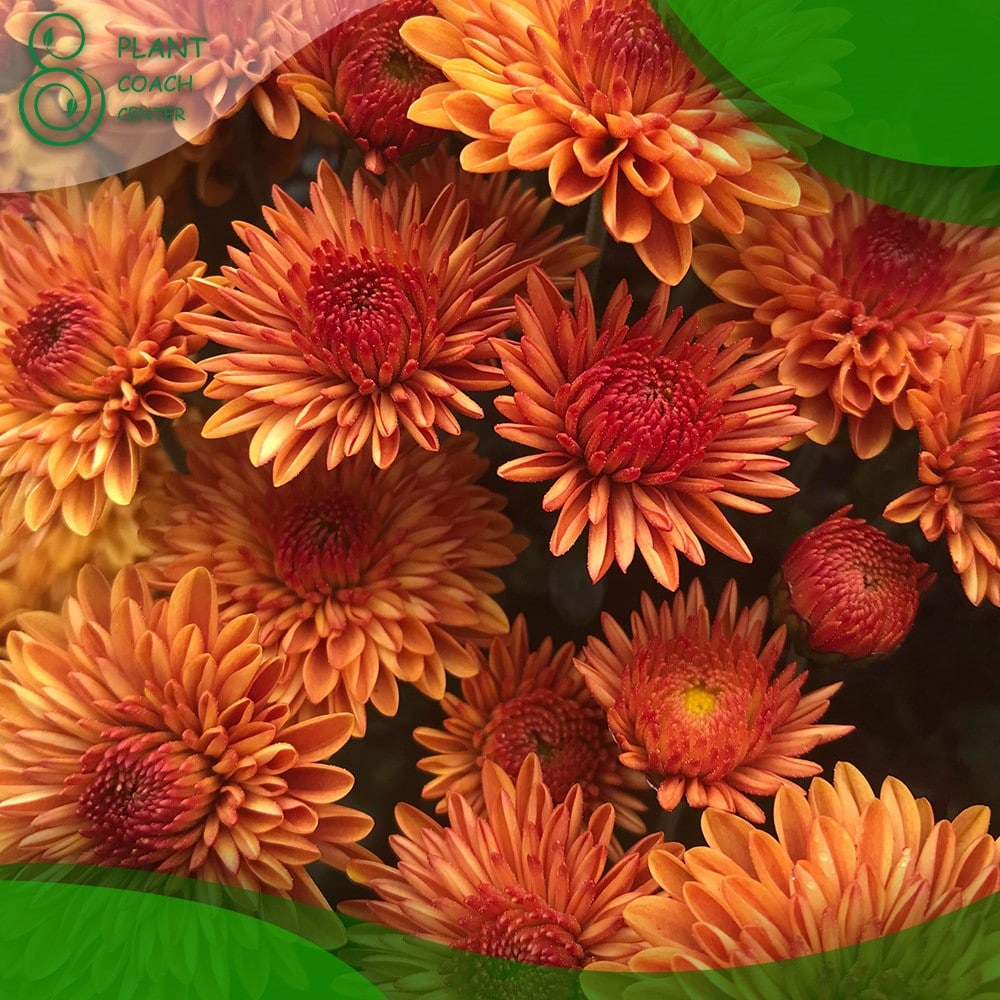When Do You Plant Mums?
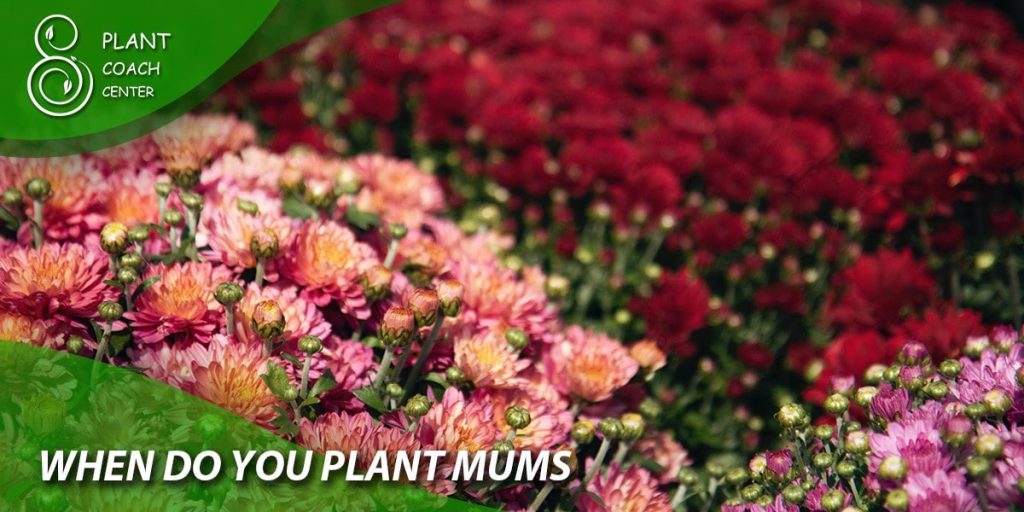
Welcome to the world of chrysanthemums, where nature’s artistry takes center stage in a breathtaking display of colors and forms. As you cultivate these enchanting blooms, a crucial question arises: When do you plant mums? The timing of mum planting is a horticultural puzzle that, when solved, unlocks the potential for a flourishing garden canvas.
Whether you’re a seasoned gardener seeking to expand your repertoire or a greenhorn eager to embrace the world of floral cultivation, understanding the nuances of mum planting seasons is essential. From the delicate balance between frosty mornings and sun-kissed afternoons to the dance of life that spans seed to blossom, each moment in the mum’s growth cycle holds significance.
In this guide, we will unravel when and how to plant mums to orchestrate a symphony of colors harmonizing with the seasons. Whether it’s the vibrant rebirth of spring or the rustic charm of autumn, the timing of your actions will choreograph the grand spectacle of your garden’s story.
Join us as we explore the temporal tapestry of chrysanthemum planting and equip ourselves with the knowledge to paint nature’s poetry upon our landscapes.
Mums 101: Understanding the Growing Cycle
Delving into the world of chrysanthemums means unraveling the captivating tapestry of their growth cycle, a journey that mirrors the ebb and flow of life itself. This intricate process can be divided into several stages, each contributing to the eventual splendor of the mum’s blossoms.
Germination and Seedlings: Patience Takes Root
The journey begins with the planting of seeds or young seedlings. Mums are perennials, meaning they can survive the winter and return year after year. Planting seeds indoors during late winter or early spring gives them ample time to germinate and establish themselves as seedlings. During this stage, patience is vital, as it might take a few weeks for the first tender shoots to emerge.
Vegetative Growth: Nurturing Young Plants
As the seedlings gain their footing, they enter a vegetative growth phase. This period involves the development of leaves and stems, setting the stage for the future formation of buds. Providing adequate sunlight, water, and nutrients at this stage is crucial to foster vigorous, healthy plants.
Bud Formation: Anticipation in the Air
The transformation becomes more apparent as buds begin to form on the plants. This stage is marked by anticipation as the promise of vibrant blooms hangs in the air. Adequate sunlight, proper spacing, and well-draining soil are vital during this period to ensure that the buds develop optimally.
Blooming Spectacle: Nature’s Masterpiece Unveiled
When the buds finally burst open, a spectacular array of colors and shapes is revealed. The blooming stage is the culmination of your nurturing efforts, and it’s a sight to behold. The duration of the blooming period varies depending on factors such as the mum variety and the local climate.
Post-Bloom Care: Nurturing for Future Seasons
After the bloom, the plant redirects its energy toward producing new shoots and storing nutrients for the next growing season. This is an essential time for trimming back faded colors and maintaining the plant’s overall health.
Dormancy: Nature’s Rest
As winter approaches, mums prepare for a period of dormancy. The foliage above the soil may die back, but the plant’s energy remains in its roots. Proper insulation and protection against extreme cold are necessary during this phase to ensure the plant’s survival through the winter months.
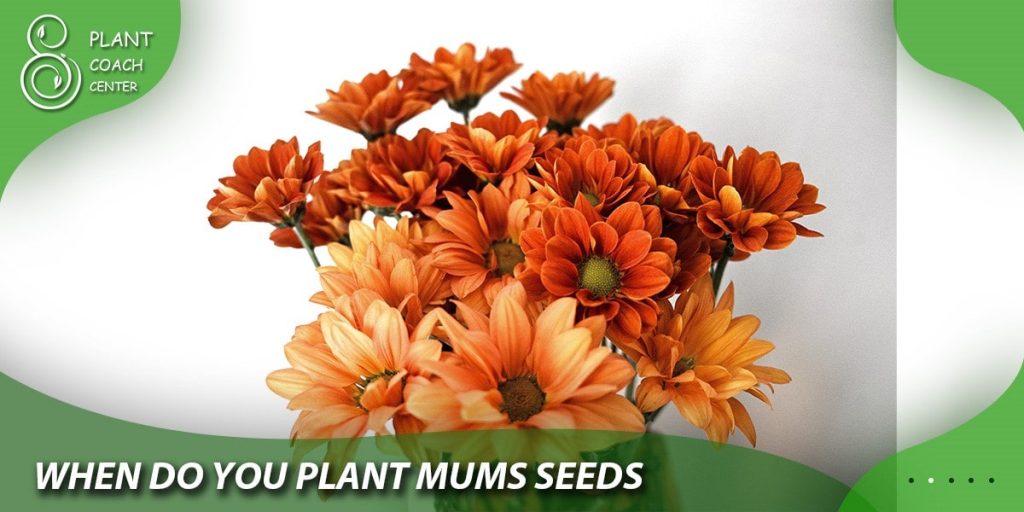
Seasonal Symphonies: Choosing the Perfect Time
As you step into chrysanthemum cultivation, timing plays a pivotal role in orchestrating a harmonious symphony of colors and blooms. Each season brings unique rhythm and challenges, allowing you to choreograph a dazzling performance in your garden.
Spring Serenade: Seizing the Early Momentum
Spring is a season of rebirth and renewal; for chrysanthemums, it’s a time of awakening from their winter slumber. Planting mums in the early spring grants them a more extended period to establish their roots before the heat of summer arrives. This early start can result in robust plants better equipped to handle the challenges of the growing season.
Summer Sonata: Taming the Heat
While spring planting holds its advantages, the summer sun can present challenges. Mums planted in the heat of summer require extra attention to watering and shade protection, as their young roots can be susceptible to stress. If you opt for summer planting, consider providing afternoon shade and consistent moisture to keep the plants thriving.
Autumn Aria: The Classic Choice
The most celebrated time for planting mums is the fall. As the leaves begin to turn and the air carries a hint of crispness, chrysanthemums burst forth in a riot of colors, perfectly complementing the season’s palette.
Fall planting aligns with the natural growth cycle of mums, giving them ample time to establish roots before the cold weather sets in. The result? Bountiful blooms punctuate the autumn landscape with vibrancy.
A Winter’s Interlude: Indoor Delights
For those in colder climates or with limited outdoor space, mum cultivation can continue indoors. Potted mums purchased from garden centers can be enjoyed indoors during winter. With proper care, these indoor mums can later be transitioned to outdoor planting once the frost danger has passed, allowing you to extend the enjoyment of these cheerful flowers.
Frosty Friends: Navigating Mums and Cold Weather
The relationship between chrysanthemums and cold weather becomes a delicate dance as the season transitions and the air takes on a chill. Understanding how mums react to frost and chilly temperatures is essential for ensuring their health and vitality throughout the year.
The Frost Factor: Mum’s Resilience to Cold
Chrysanthemums are surprisingly hardy plants that can withstand light frosts. In fact, a touch of frost can even enhance the color intensity of their blooms. However, a hard freeze—where temperatures drop below 28°F (-2°C)—can spell trouble for these floral wonders. When exposed to such extreme cold, mums’ cells can freeze and burst, causing irreversible damage.
Preventive Measures: Shielding Your Blooms
To protect your mums from frost and freezing temperatures, consider these preventive strategies:
Mulching Magic
A layer of organic mulch around the base of your mums acts as a natural insulator. This protective barrier traps heat in the soil, shielding the roots from extreme cold.
A blanket of Warmth
When a frost or freeze is predicted, cover your mum’s plants with frost cloth or old bed sheets in the evening. This creates a protective barrier that traps the heat from the ground, preventing rapid temperature drops.
Strategic Placement
Plant mums in areas where they receive morning sunlight. This allows them to thaw gently as the sun rises, reducing the likelihood of frost damage.
Potted Perks
If you’re growing mums in containers, bring them indoors or to a sheltered area during freezing nights. This prevents the roots from freezing in the confined space of a pot.
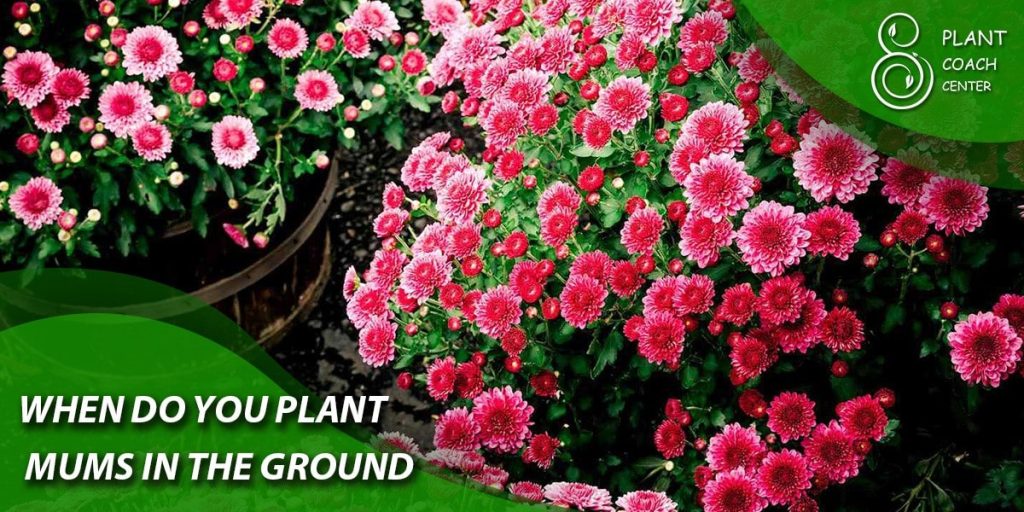
After the Freeze: Post-Cold Care
If your mums have been exposed to a frost or freeze, resist the urge to prune or trim the damaged portions immediately. Wait until new growth begins in the spring to assess the full extent of the damage. At that point, you can carefully trim away any dead or diseased parts to encourage healthy regrowth.
Choosing Frost-Resistant Varieties
If you live in an area with harsh winters, consider planting hardy or frost-resistant mum varieties. These types have been specifically bred to withstand colder temperatures, making them more likely to bounce back after a frosty night.
Understanding the intricate balance between mums and cold weather, you can proactively safeguard your plants against frost and freezing temperatures. With some preparation and care, your mums can continue to thrive and enchant, even in the frostiest conditions.
Springing to Life: Early-Season Mum Magic
In the grand symphony of chrysanthemum cultivation, the early notes of spring play a crucial role in setting the tempo for a vibrant and successful growing season. Planting mums during this awakening period offers unique advantages and the promise of a garden bursting with life.
Root Development: Laying the Foundation
Spring planting allows chrysanthemums to establish robust root systems before the summer heat arrives. With ample time to develop their roots in spring’s excellent, moist soil, mums are better equipped to access water and nutrients, leading to healthier and more resilient plants.
Mild Temperatures: A Gentle Beginning
The mild temperatures of spring provide an ideal environment for young mum plants to acclimate gradually. Unlike the scorching heat of summer or the potential frost of fall, spring offers a gentle transition from the cooler days of winter, reducing the stress on the plants as they adapt to their new home.
Extended Growing Season: Blooms on the Horizon
By planting mums early in the spring, you effectively extend the growing season for these vibrant beauties. With ample time to establish themselves, mums planted in spring may even produce earlier blooms, delighting you with their colorful display sooner than if you were to grow later in the year.
Pest and Disease Management: Staying Ahead
Spring planting allows you to get ahead of potential pest and disease issues. With fewer pests and pathogens active during the cooler months, your young mums have a better chance of getting a healthy start without the immediate pressure of certain garden nuisances.
A Garden Reawakened: Aesthetic Delight
There’s a certain magic in witnessing your garden come to life after the cold months of winter. By planting mums in the spring, you contribute to this reawakening, adding vibrant splashes of color to your landscape just as other plants stretch and bloom.
Pruning and Shaping: Guiding Growth
Early planting in the spring also gives you the advantage of shaping and pruning your mum’s plants as they grow. Pinching back young shoots can encourage branching and fuller growth, resulting in a bushier and more abundant display of blooms.
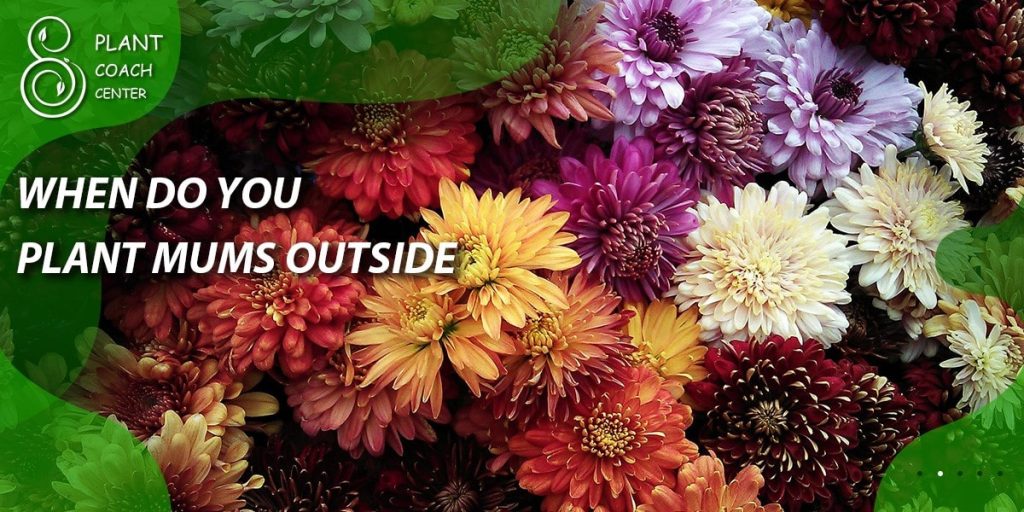
Fall Fiesta: Tapping into Autumn’s Charm
As the leaves begin their colorful descent and the air carries a crisp hint of change, the allure of fall brings a unique enchantment to the world of chrysanthemums. Planting mums during this season aligns with nature’s rhythm and creates a breathtaking garden display that complements the rich tapestry of autumn.
Natural Synchrony: Mums and Fall’s Palette
Chrysanthemums and hand in hand, creating a symphony of colors that resonates with the changing landscape. The warm hues of red, orange, and gold that mums bring perfectly mirror the shades of falling leaves and the amber glow of the season.
Optimal Planting Conditions: A Cooler Welcome
Fall planting offers mums cooler temperatures, which are ideal for root development. The soil is still warm from the summer sun, encouraging robust root growth without the stress of scorching heat. This builds a stronger foundation for your mums to thrive in the coming seasons.
Extended Blooming Period: A Lasting Showcase
Mums planted in the fall enjoy a head start in their growth cycle, resulting in more established plants by spring. This can lead to earlier and longer-lasting blooms, ensuring your garden remains vibrant and captivating well into autumn.
Natural Hardening: Preparing for Winter
Mums planted in the fall have the advantage of experiencing gradual temperature drops, which signals the plants that it’s time to fortify themselves for the approaching winter. This natural hardening process helps mums become more resilient to the cold, setting them up for better survival through the frosty months.
Less Water Stress: A Thirst Quenched by Nature
Fall’s cooler temperatures mean that plants lose less moisture through evaporation. This reduces the risk of water stress on newly planted mums and allows them to establish their root systems with less frequent watering.
Fall Festivity: Garden as Artistry
Planting mums in the fall transforms your garden into a canvas of seasonal artistry. Whether aiming for a cohesive color scheme or a riot of vibrant hues, the combination of fall foliage and blooming mums creates a visually stunning spectacle.
Time Travel for Mums: Extending Bloom Seasons
Unlocking the secret to an extended and mesmerizing display of chrysanthemum blooms involves time manipulation and a touch of horticultural finesse. By strategically staggering your mum planting times and employing specific techniques, you can stretch the bloom season and enjoy the splendor of these flowers for even longer.

Successive Planting: Blooms Unfolding in Stages
Subsequent planting is a technique that involves planting mums at different times to ensure a continuous sequence of blooming. By selecting mum varieties with varying bloom times and planting them a few weeks apart, you can orchestrate a breathtaking display that unfolds over several weeks, creating an ever-changing landscape of color.
Pinch-Pruning: Shaping Growth for Delayed Blooms
Pinch-pruning is a strategic method that removes the growing tip of young mum shoots. This encourages lateral branching and delays the formation of blooms. By carefully pinching back certain stems while allowing others to bloom naturally, you can create a staggered bloom schedule within a single plant, extending the overall flowering period.
Indoor Propagation: Extending the Growing Window
Indoor propagation offers a unique opportunity for those who wish to have mums blooming indoors and outdoors. Start mums from seeds or cuttings indoors well before the last frost. Once the danger of frost has passed, transplant the established seedlings or rooted cuttings outdoors. This allows you to enjoy early blooms indoors and a successive display outdoors.
Overwintering: Mums for Multiple Seasons
With some foresight, you can overwinter mums and enjoy their blooms for years. Instead of treating mums as annuals, plant them in a way that allows them to survive the winter. Come spring, the overwintered mums will have a head start in growth, resulting in early and robust blooms.
Container Magic: Controlling Microclimates
Planting mums in containers provides you with control over their growing conditions. You can move containers to different locations, adjusting exposure to sunlight and temperature. This flexibility allows you to manipulate the growing environment, potentially influencing the timing and duration of blooms.
Fertilization Finesse: Timing Nutrient Boosts
Strategic fertilization can also impact the timing and vigor of mum blooms. Providing nutrients at specific times during the growing season can encourage healthy growth and blooming. Adjust your fertilization schedule based on the desired bloom timing, enhancing visual impact.
Conclusion
As we bid farewell to explore the intricate world of chrysanthemum planting, we find ourselves equipped with the knowledge and techniques to orchestrate a stunning garden display that dances through the seasons. From the delicate balance of planting times to the artful manipulation of growth, chrysanthemums offer us the canvas upon which we paint nature’s ever-changing beauty.
As you embark on your journey to cultivate these vibrant blooms, remember that the symphony of colors and the tapestry of petals are yours to conduct.
Whether you tap into the charm of autumn’s hues, extend the bloom season through clever tactics or simply revel in the joy of understanding the mum’s growth cycle, your garden will flourish with newfound vibrancy.
For more gardening insights and inspiration, continue your journey with us at PlantCouchCenter.com, where the world of flora beckons and the magic of cultivation awaits.
When is the best time to plant mums?
The ideal times are spring for early growth and fall for classic autumn blooms.
Can I plant mums in summer?
Yes, but provide shade and extra care to combat heat stress.
How do I protect mums from frost?
Use mulch, frost cloth, and proper placement to shield them from cold snaps.


